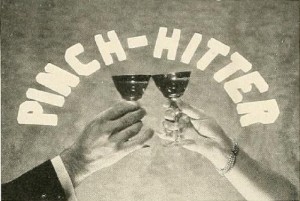
"Pinch Hitter, a photoplay by Charles J. Cafbonaro, has been given Honorable Mention because of its continuously sustained technical brilliance in the face of many problems of cinematic story telling. A suave situation comedy, it presents the dilemma of a girl who is asked once too often by her roommate to substitute for her on a temporarily undesired date. In time, the pinch hitter goes to bat for herself, knocks out a home run and leaves her roommate caught flat footedly out. In presenting this comedy of manners, Mr. Carbonaro has been helped by good acting from his players but hindered by not quite a light enough touch in the film's pace and direction. The lighting and camera work, which are genuinely of top flight quality, go far but not quite far enough in disguising this one weakness." Movie Makers, Dec. 1936, 550.
"A couple dine in a restaurant. She is so busy with powdering her nose and correcting her lipstick that the "garçon" despairs of ever getting their order. In the end, her suitor orders water and razor to get his revenge." Library and Archives Canada.
"A story, typical of the period, which includes - young lovers, a mother with high aspirations for her daughter, a rascally Count and much ‘ado’." (EAFA Database)
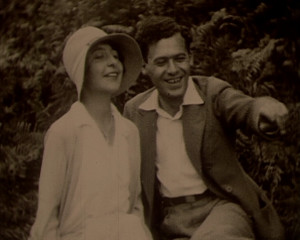
"A group of upper-middle class young men (dressed in shirts and ties, one in a striped blazer) sit on the grass. They are idle and bored and missing women. An intertitle states that `there is not a bird in sight'. A group of young women from the Amena Stich private school, led by their bespectacled female teacher, is walking out for exercise. The men see them and life looks better. They hide behind a hedge as the women pass by. The young women stray on a side path leaving their teacher to walk on alone. She eventually notices her young ladies are not behind her and goes to look for them. Meantime the men and women have met up and all sit around on the grass, the women being chatted up. Professor Stephen Chickwood is in the woods looking for insects. He meets the teacher and offers help to find her girls. They form a relationship and walk hand in hand. Eventually they come upon the young men and women who laugh and point at them. Amena shouts `Help'" (EAFA Database).
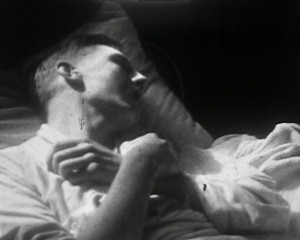
"Amateur filmmaker, cinema historian and railway engineer H.A.V. Bulleid presents a tale of paternal foreboding and rural tragedy. When a man dies, his widow seeks a suitable replacement to care for her and their son. Torn between two rival suitors - Dr. Vincent Moire and the mysterious Richard Grafton - the mother is unable to make a decision, despite her son expressing a clear preference for the doctor. When he is called away to town, Grafton seizes his opportunity and, wanting rid of the boy so that he might live with the mother in peace, shoves him over a cliff to his death. But when Grafton returns to the village, he spots the doctor - who has made an unexpected return - walking arm in arm with the widow. Distraught and defeated, Grafton claws at his neck and face in desperation, reaches into his jacket, pulls out a gun and kills himself." (EAFA Database)
"Stillborn, also winner of the MPD Student Film award for the best film made by a student enrolled in a college course in cinematography, is an experimental film at times abstract in its execution. It tells the story of a boy and girl who meet out in the middle of nowhere. As he looks upon the young girl's face he imagines what life with her might be like. His imagination runs wild as he thinks of the blissful episodes such as marriage would bring, as well as the entrapment he could suffer. At film's end he makes his decision. Use of the negative image for one sequence is extremely effective" PSA Journal, Sept. 1966, 34.
"Mathis Kverne returns to the winner's circle with another delightful and imaginative animated cartoon, Strokets Kavalerer—which has been translated for us "Main Street Romeos." This time we meet two boy paint brushes who try, with varying degrees of success, to win the hand of an attractive girl brush. One, a wordly boulevardier, plies her with costly presents, while the other, a real booby, offers her naive, if presumptuously intimate, gifts. When the lady has at last been won—by the booby, of course—we follow the happy couple through their marriage and the birth of their first born, a yellow brushlet of undetermined sex. Although this film may not captivate the viewers as completely as did Mr. Kverne's Muntre Streker (Ten Best 1952) that picture's promise is more than fulfilled. The animation here is smoother in all respects, the development of the story line more definite and the personalities of the individual characters more precisely realized. The result is a film of lighthearted charm which will enchant one and all. And puzzle them too, for the animated methods used by Kverne are still his own secret!" PSA Journal, Jan. 1954, 49.
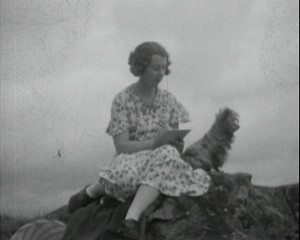
"Amateur filmmaker and cinema historian H.A.V. Bulleid employs rapid montage and a sense of foreboding in this rural tragedy set in the Welsh countryside. On farmland in rural Wales, where crumbling farm buildings reflect the rural desolation, a young lady spends her holidays wandering the fells with her ever reliable dog. When she meets a young farmhand, a romance develops. But as the girl grows closer to the young man, she pays less attention to her dog. And when the dog is left at the farmhouse as the pair goes rock-climbing, tragedy ensues. Sensing a problem, the dog searches the fells as day turns to night. But will he find his master? And will the young lovers survive?" (EAFA Database)
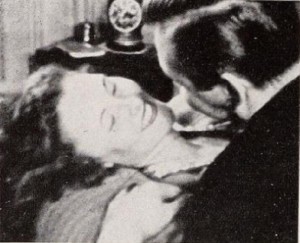
"Novel continuity, beautiful cinematography and a nosegay of feminine charms are the distinctive features of Ten Pretty Girls, produced by Anchor O. Jensen. This expert little drama, made on 8mm Kodachrome, is an excellent example of quality workmanship in that width. The opening scene shows a young man contemplating his address book. He folds a large piece of paper and cuts from it a string of ten dolls, which become the symbols of as many lovely young women. As each doll is torn from the group, a new sequence featuring one of the girls is introduced. A different flower, corsage or bouquet figures in the action as each of the girls is shown in some individual and flattering setting. At the conclusion, the young man has made his choice; he spurns the blondes and brunettes for the favors of a titian beauty." Movie Makers, Dec. 1943, 474.
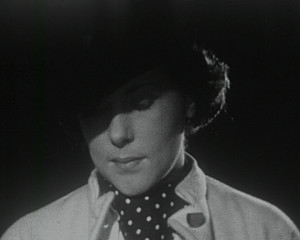
"Morality tale about the corrosive effect of money." (EAFA database)
Total Pages: 4